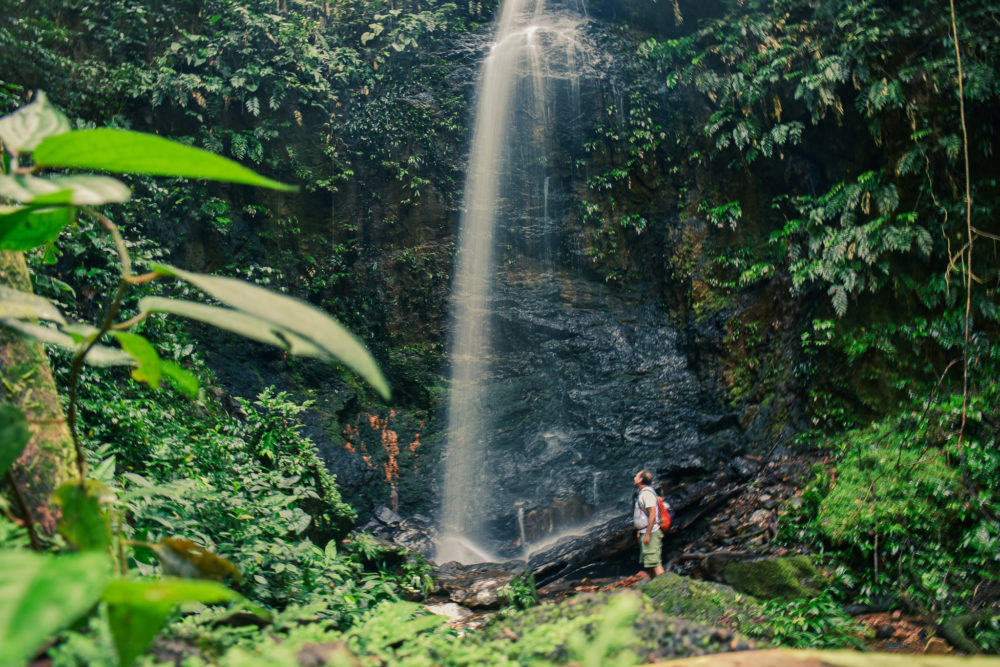January 2022: Suriname is a fascinating country that I promise you most people have never heard of. I discovered this when waiting at the airport gate to board my plane as one person after another walked by, stopped to stare, and asked aloud, where is Suriname?
Suriname, an ex-Dutch colony, is 80 % covered in the pristine Amazon rainforest. Most of the country, including the coastal areas, is inaccessible due to the lack of roads and infrastructure. The country is home to many indigenous tribes, descendants of enslaved Africans, Dutch colonists, and immigrants from Dutch colonies worldwide. Old decaying wooden Dutch colonial-era houses and plantations still remain as ghostly reminders of the country’s past.
My trip to Suriname and French Guiana nearly never happened. After all, Suriname has been closed to tourists for most of 2020 and 2021 because of Covid. A month after being stranded in Mozambique when Omicron first introduced itself to the world, skyrocketing covid cases and mixed signals from Suriname authorities led me to think that my trip to Suriname would never happen. Even the Suriname E-visa website’s homepage indicated Suriname was closed to tourism. I later found out that the visa website had failed to update old information. In the end, Suriname remained open, and my three-day trip over New Year’s seemed like it would actually happen. Then, of course, I also had to actually not get Covid which in San Diego was exploding all around me in record numbers.
.
About Suriname
Suriname is the only Dutch-speaking country in South America. The steamy, tropical country must have been inhospitable when first colonized in the 1700s. It changed hands among European powers a few times but eventually fell in the hands of the Dutch in exchange for giving New York to the British. For centuries, the colony thrived off of slave labor for its plantations. Initially, the natives were enslaved, but most of them either died or managed to escape since they were familiar with the terrain. So, the Dutch looked to enslaved Africans. Enslaved people revolted and disappeared into the forest, forming maroon communities, and eventually, freedom was granted to them. To fill the labor void, the Dutch looked to their other colonies in India and Indonesia to bring in the next best thing to slavery-indentured servants- basically paid slaves. The indentured servants worked the plantations. The rich mix of ethnic groups formed by the country is still evident today.
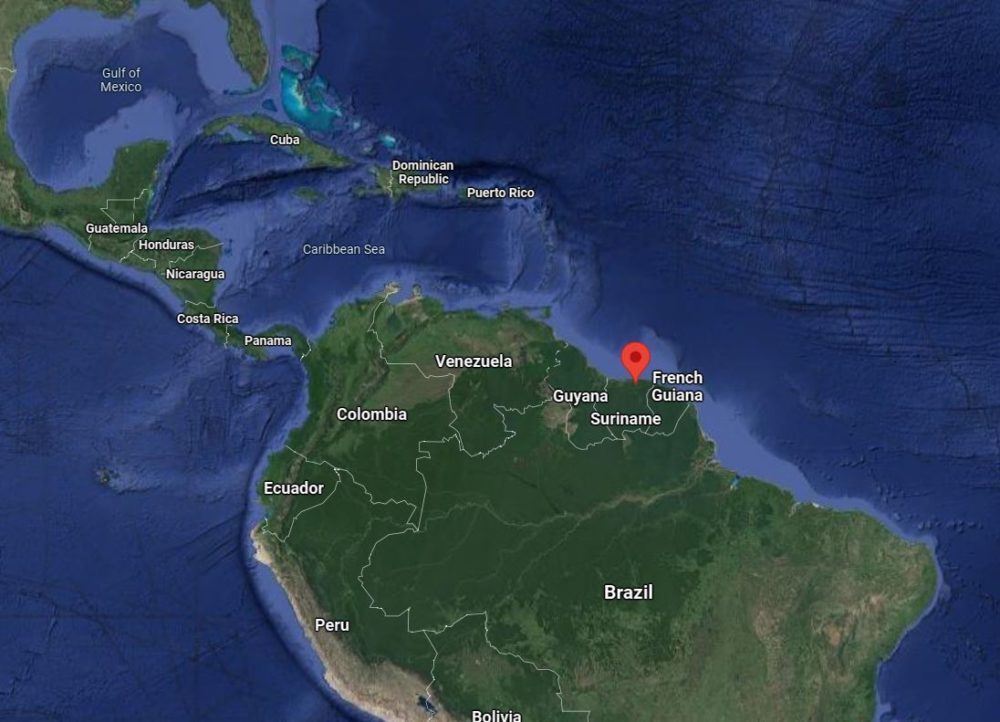
Map of Suriname
Day 1: My friend Jimmie and I flew to the capital of Suriname, Paramaribo, via Miami, arriving just minutes into the New Year. Our plane was empty, and I had an entire row to sleep on for the 5-hour long flight. Arriving late on New Year’s Eve, I knew no one would be working. Everything would be closed, so I made arrangements in advance for a taxi and a cabin with the nice manager of Overbridge Lodge. This old plantation is now a resort community on the Suriname River. There wasn’t much to do but go to bed when we arrived at the resort. Covid curfews in Suriname required the closure of everything at 7pm, and it was well past midnight.
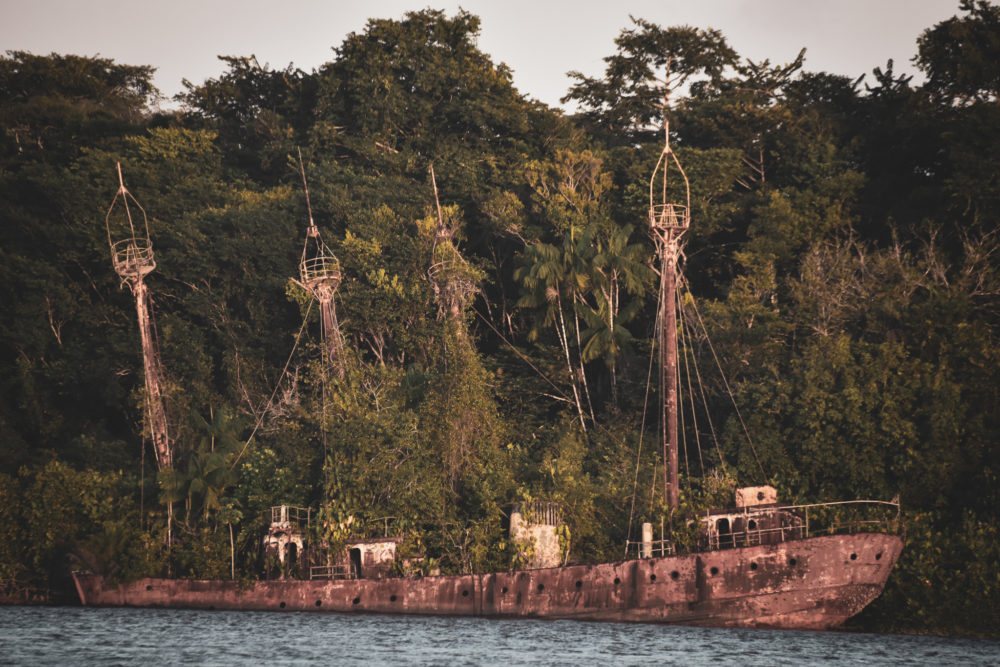
50-year-old ruined cargo boat now abandoned and believed to be haunted.
In the morning, we explored the Overbridge resort. Even though it was a little rough around the edges and not as nice looking as its website presented, we ended up liking the relaxed and picturesque vibe of the place. The staff of the resort was also extremely welcoming.
After breakfast, our transport arrived to pick us up and transfer us to Galibi, a remote Ameri-Indian village along the French Guiana border. With only three days and it being over New Year, I had difficulty finding anyone to drive us. I almost rented a car to drive ourselves, which would have been fine. Still, I was hoping to do without the stress of being responsible for a vehicle, mainly since most of our trip would consist of traveling up a river.
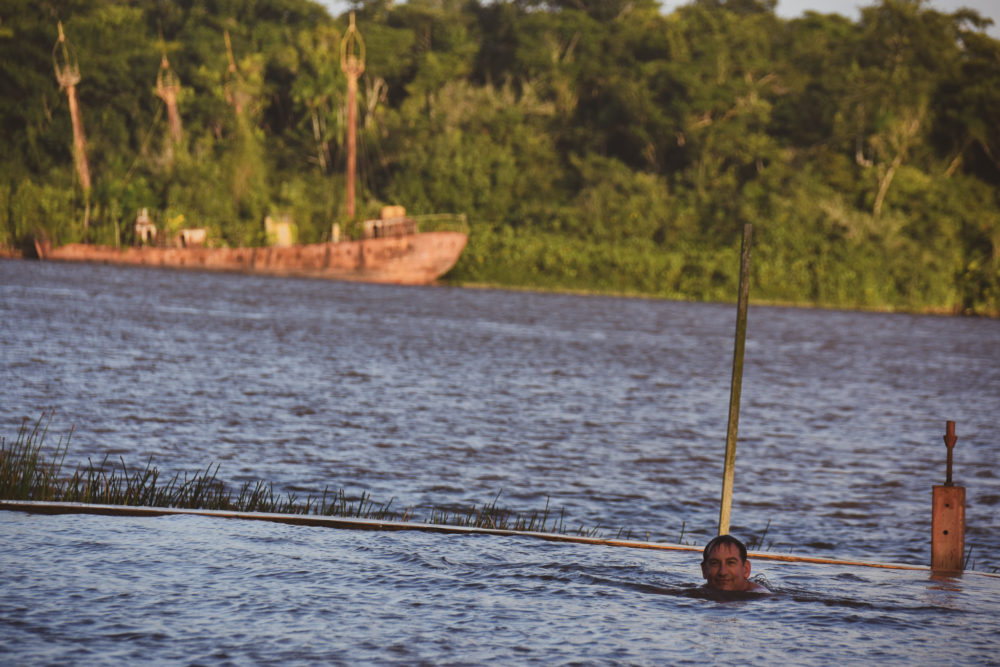
The infinity pool full of Suriname River water overlooking a 50-year-old ruined cargo boat now abandoned and believed to be haunted.
Paramaribo
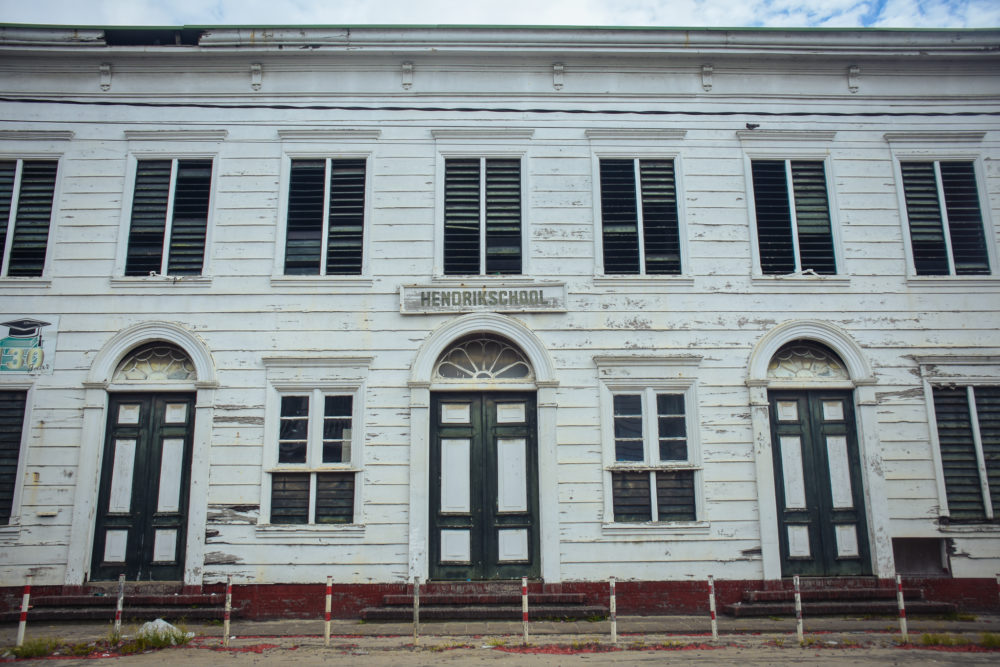
Old Dutch School in Paramaribo
My friend needed to visit an ATM, so we spent an hour driving from ATM to ATM only to discover that all of them were out of currency since it was New Year, a popular time to take money out for locals during the holiday. The streets were empty as we drove around in the old Dutch colonial city of Paramaribo. The only people around were in the New Year’s church service in the country’s tallest wooden church at St. Peter’s and Paul’s Cathedral. The majority of the buildings in the old Dutch center were abandoned and boarded up but adorned with a beautiful look of decay.
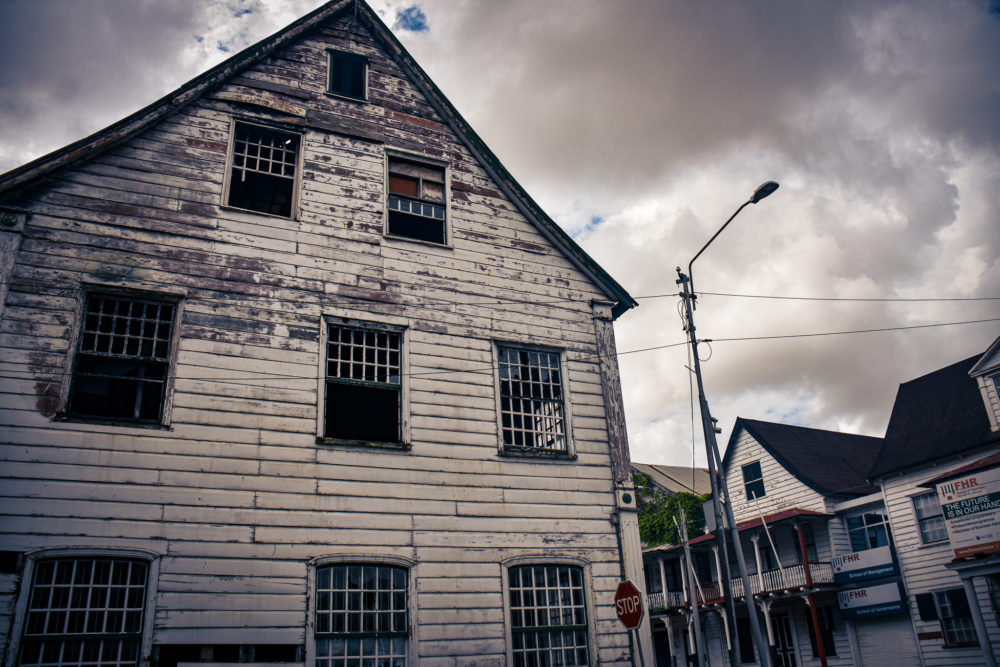
Old Dutch Neighborhoods
It was amazing to see so many old colonial-era buildings made of wood still standing. This wouldn’t be possible in the Caribbean Dutch Isles, where hurricanes have taken out similar structures long ago. These old buildings are still standing only because Suriname sits outside the hurricane belt. Their biggest enemies now are fire, termites, and years of dereliction.
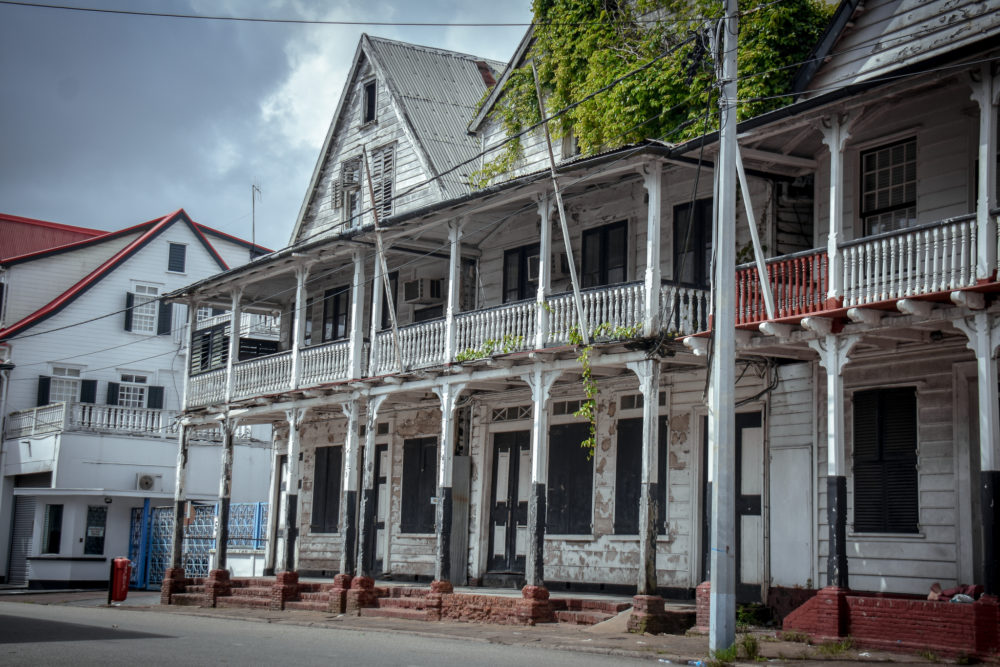
Old Dutch Neighborhood
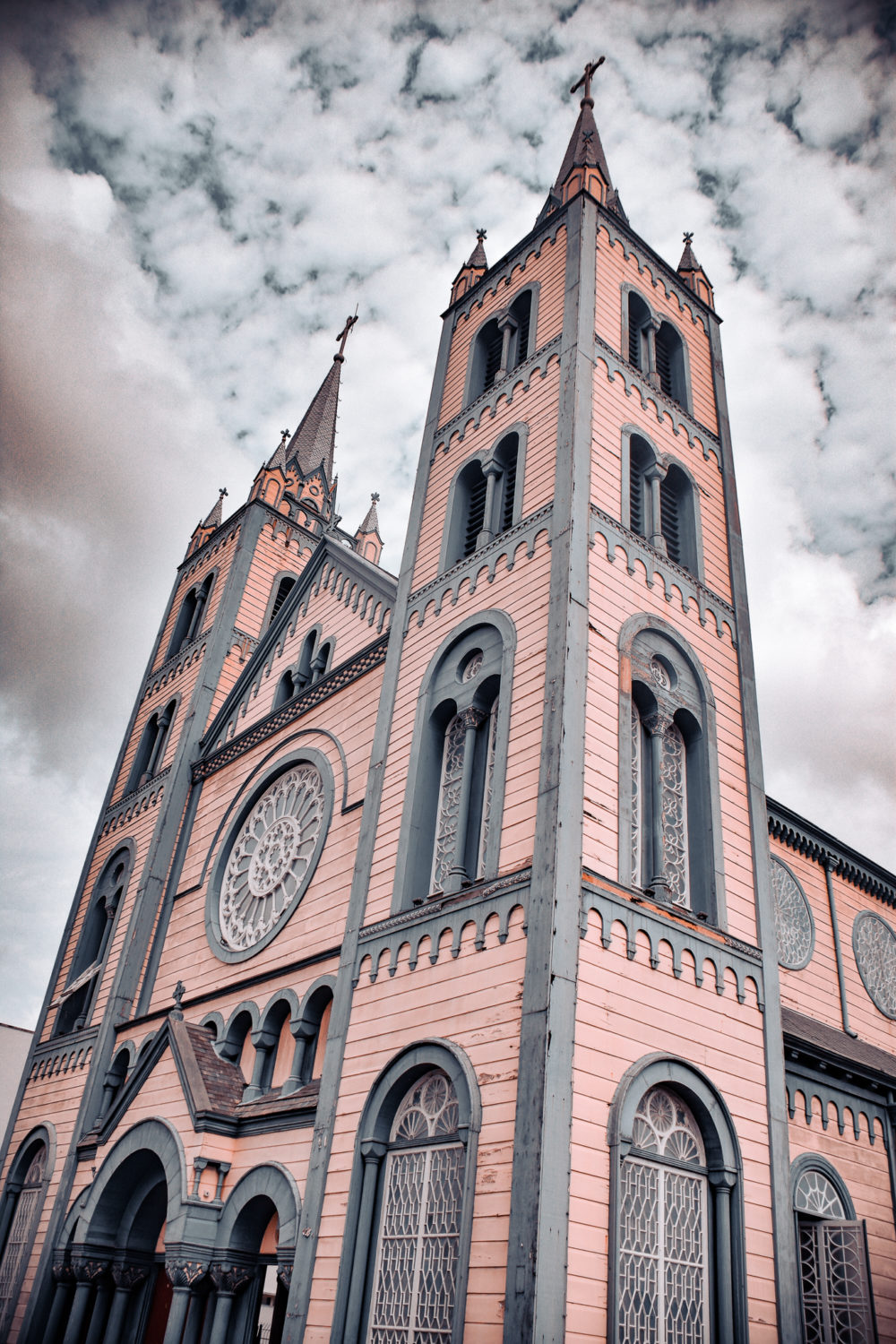
Colonial Era Wooden Church-St. Peter and Paul Cathedral
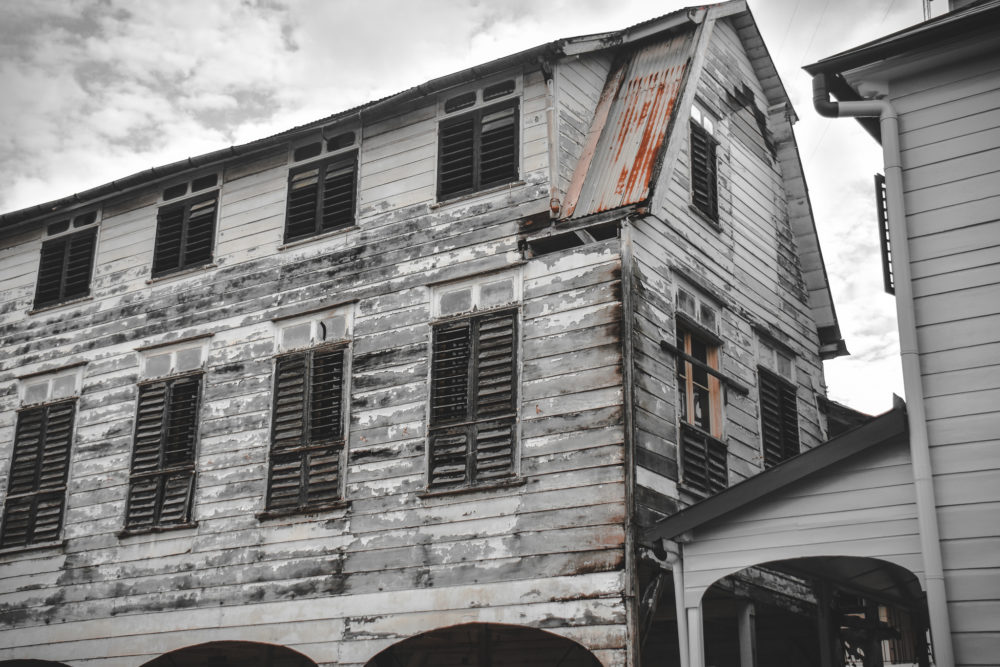
Old Paramaribo
After finally securing a working ATM, we set off to the Carib Indian village of Galibi, which was still hundreds of miles away. On the way, we passed over the Suriname River and saw a half-sunk German freighter ship. The ship was scuttled by its German crew during World War II since the Netherlands was at war with Germany and sought to seize the vessel. The crew turned themselves in but only after deliberately scuttling their ship to ensure it didn’t fall into enemy hands.
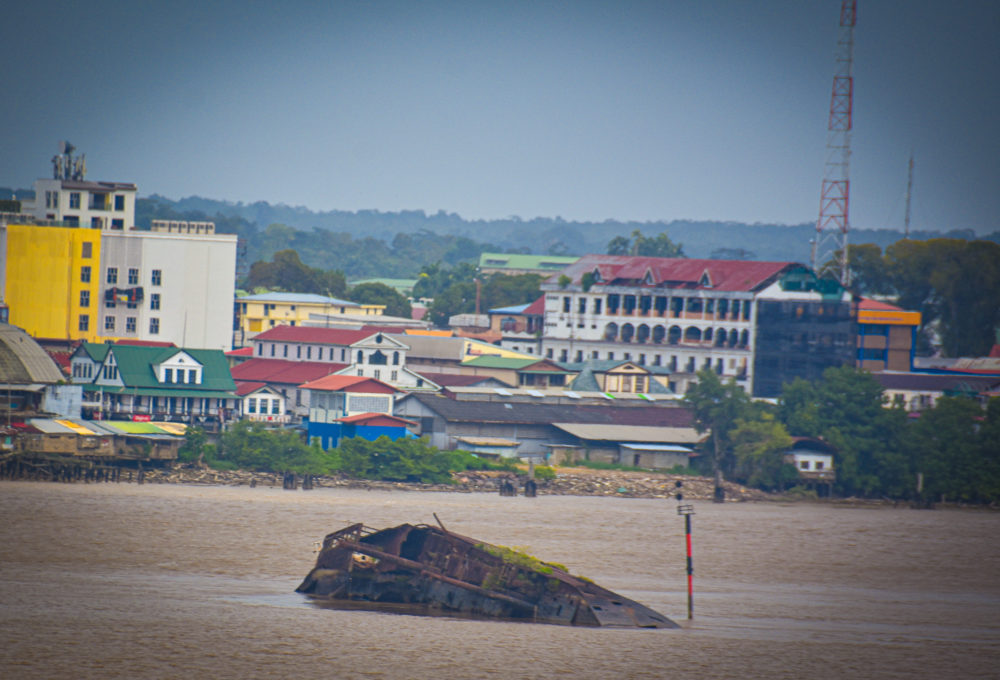
German freighter sunk by its sailors during WWII
We traveled across one of the only trans Suriname roads to the border of French Guiana. The road was empty, and our driver picked up a few beers. We toasted to the New Year’s and drank one on the spot, and the driver and his friend kept two beers conveniently holstered in cup holders on the dash while driving. The funny thing is the police officers at the checkpoints we passed didn’t even bat an eye over the very visible opened beers next to the driver. I wasn’t too concerned; the driver wasn’t intoxicated, and as he mentioned, the beers were not strong. But I was ready to restrict him to two, nonetheless.
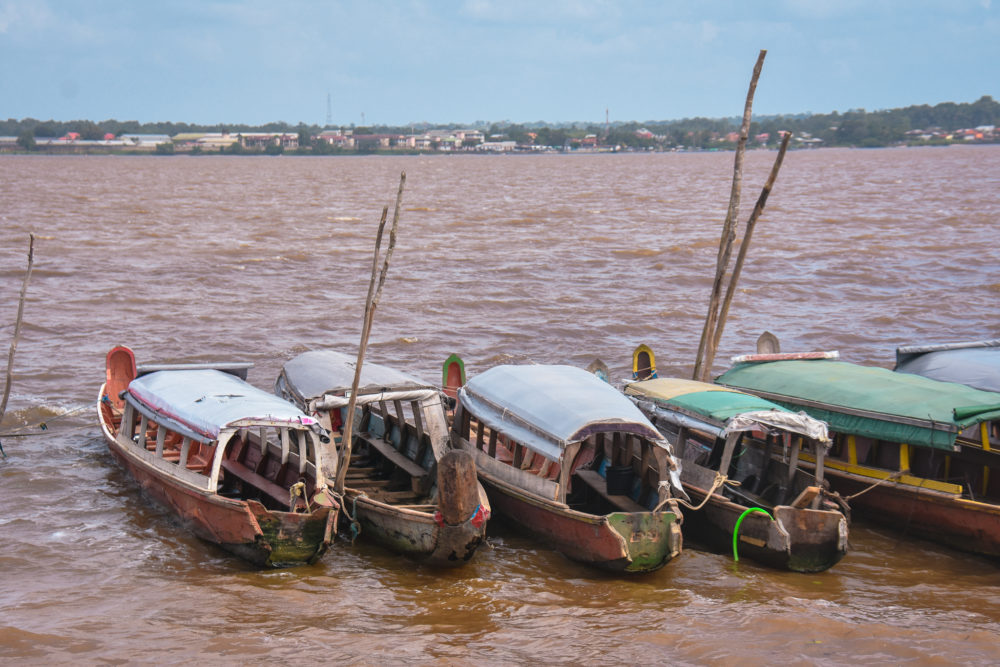
River boats that the locals use to travel up the Marowijne River
We had a flat tire and pulled over into the driveway of a family descended from South India to repair it. Suriname is home to many different ethnic groups-Indonesia, South India, black, Native Indians, etc. All communities speak creole Dutch.
Traveling Upriver to Galibi Carib Ameri-Indian Village
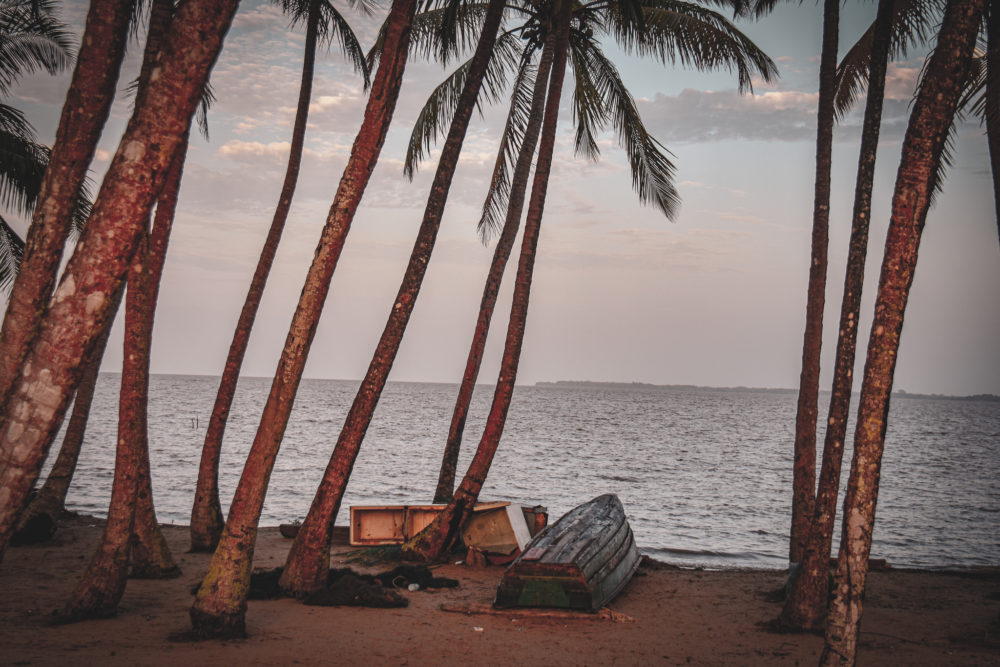
Dividing the territory of French Guiana and Suriname is the Marowijne River, which runs parallel north and south along the border. It divides mainly virgin rainforest and swampland before it empties into the Atlantic Ocean near the Carib Indian village of Galibi, where we stayed for one night. We met our boatman and his young son in Albina, the rough and tumble border town full of Brazilian gold miners, prostitutes, and other undesirables. In my experience, every boatman in the world has a young assistant, usually a son. We promptly had another celebratory beer for New Year and started upriver in the boat. We didn’t get far before the motor died. So, we had to call over a motorboat mechanic to work his magic and change a few spark plugs before we set off on our way an hour late. The journey upriver to Galibi lasted two hours, passing endless jungle, the captain spotted a river dolphin, and I took the time to catch up on sleep when I wasn’t busy trying to fend off splashing river waves.
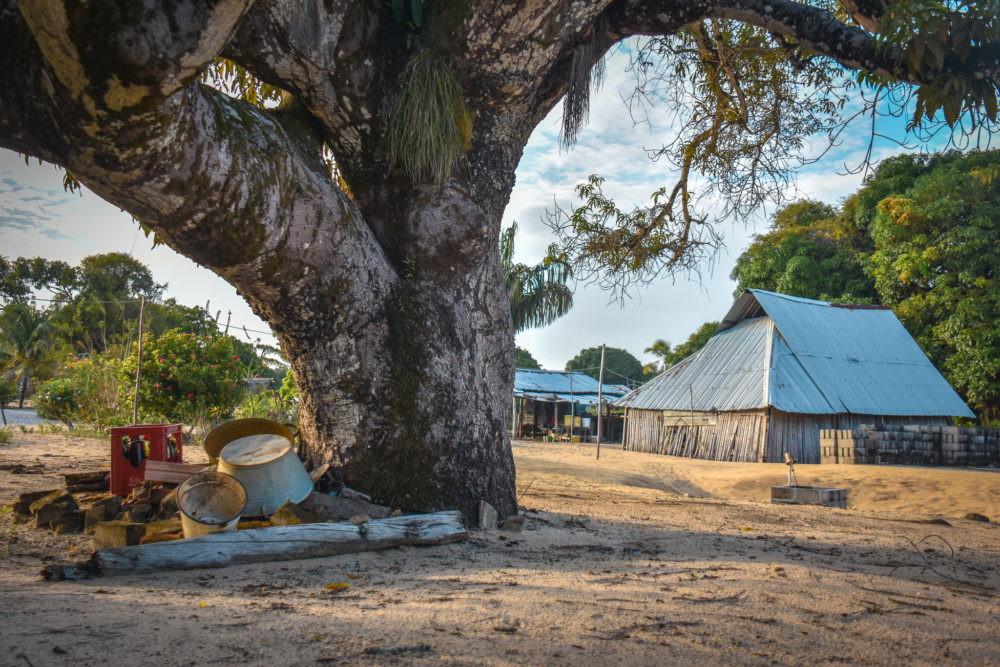
Village Layout
Galibi is a sleepy tropical village of Carib Indians that is only accessible by boat. No roads lead to the town. It is surrounded by the Marowijne River and swamp forest. The beaches outside of Galibi village are also one of the main nesting sites for the giant leatherback and green turtles. Almost half of the world’s population of Leatherback turtles lay their eggs in the area.
The village of Galibi itself consists of ramshackle houses, some built out of traditional thatch, others modern concrete. The town is spread out in sandy lots dotted with tropical fruit trees, with raucous parrots and vultures flying about. The village sits on the long sandy beach of the Marowijne River, and the entire beach disappears during high tide; some of the waves have been powerful enough to destroy some buildings built too close to the river.
The Carib people speak the Carib language, Dutch, and some French and English. They practice a hybrid of traditional shamanistic religions mixed with Catholicism. The village is heavily dependent on fishing and tourism from those who observe sea turtles laying their eggs in the Wia Wia Reserve, a vast wilderness area of desolate long sandy beaches and coastal swamp forest to the north.
We walked a short distance to our rustic rooms for the night. The guest house was basic with a spring mattress, sheet, and pillow dropped off our packs and set off to explore the village without a village guide from the town.
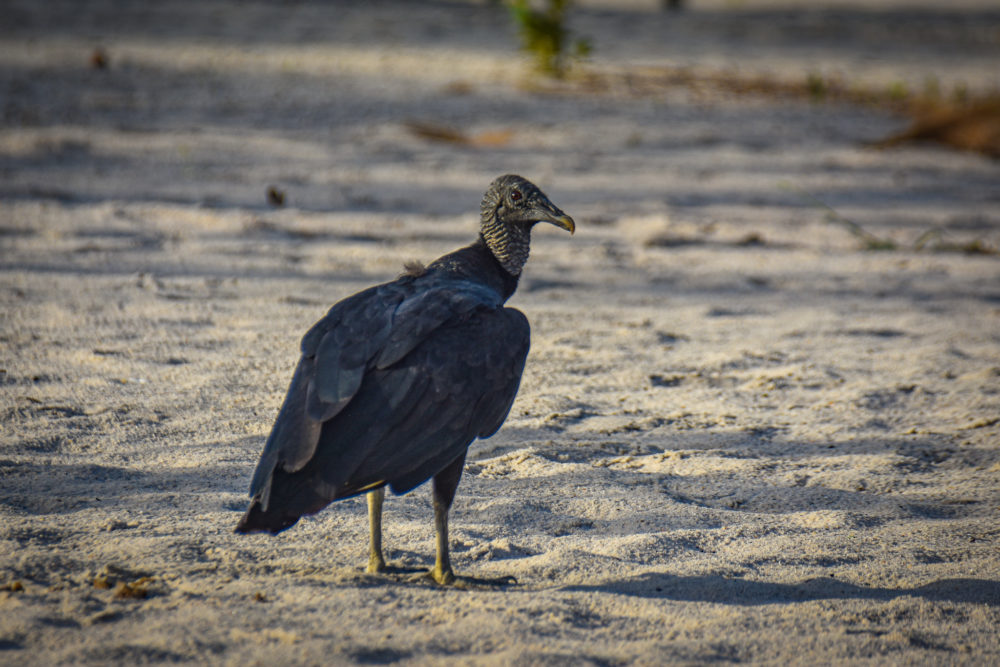
Flocks of black vultures were a common sight along the river
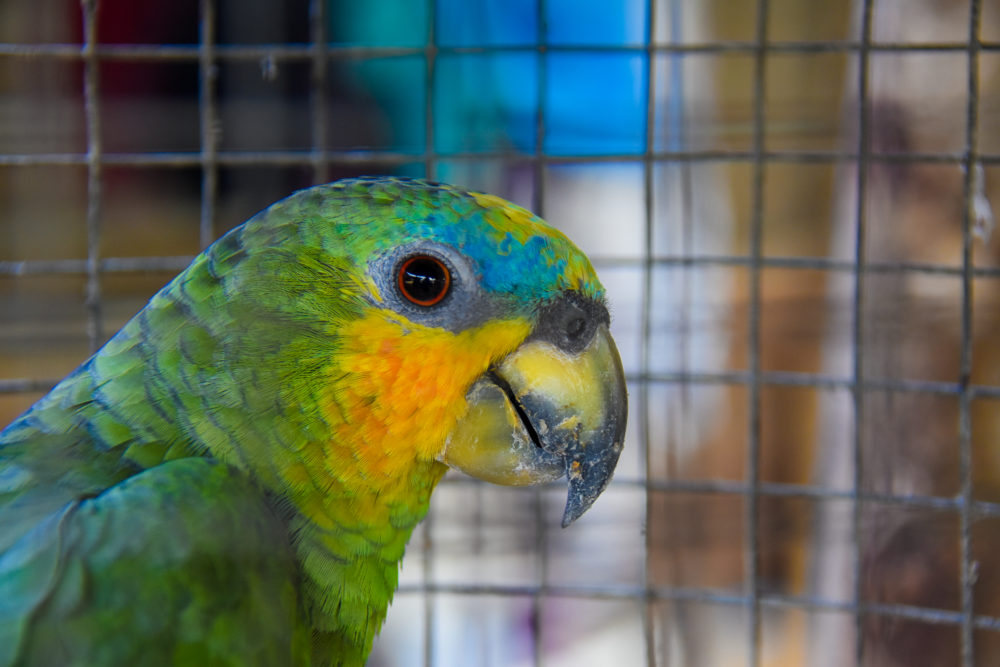
A man’s pet parrot captured from the wild
Although relaxed and the people friendly and kind, the quaint village would be very uncomfortable to explore on your own without someone from the town to guide you. With our village guide, we walked along a sandy trail between houses greeting families who were gathered sharing food and drink for New Year. We didn’t intrude and respected everyone’s privacy.
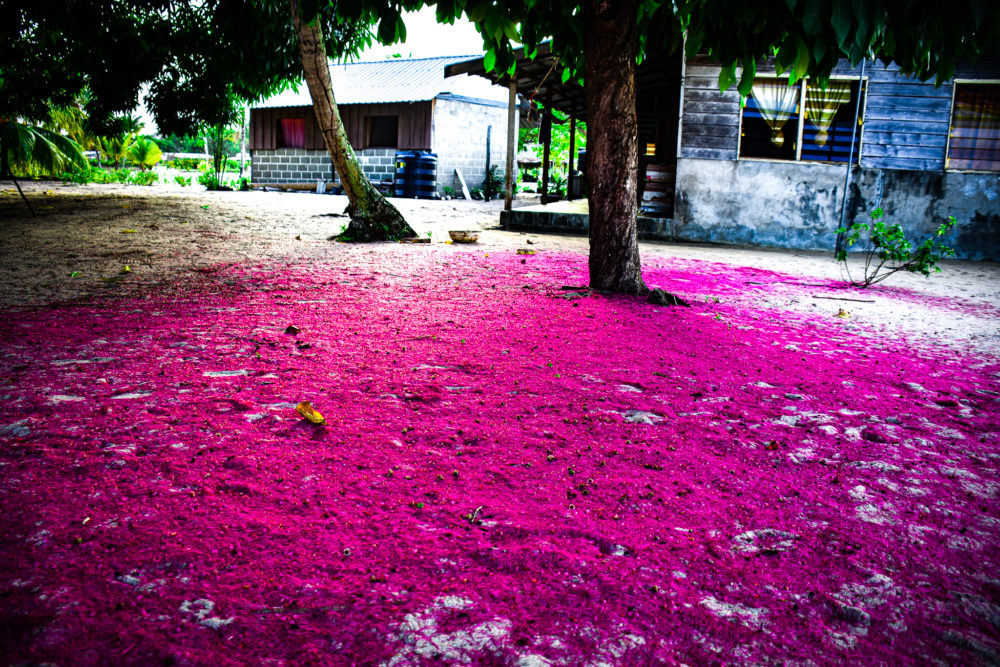
A fruit tree leaving colored seeds all across the ground
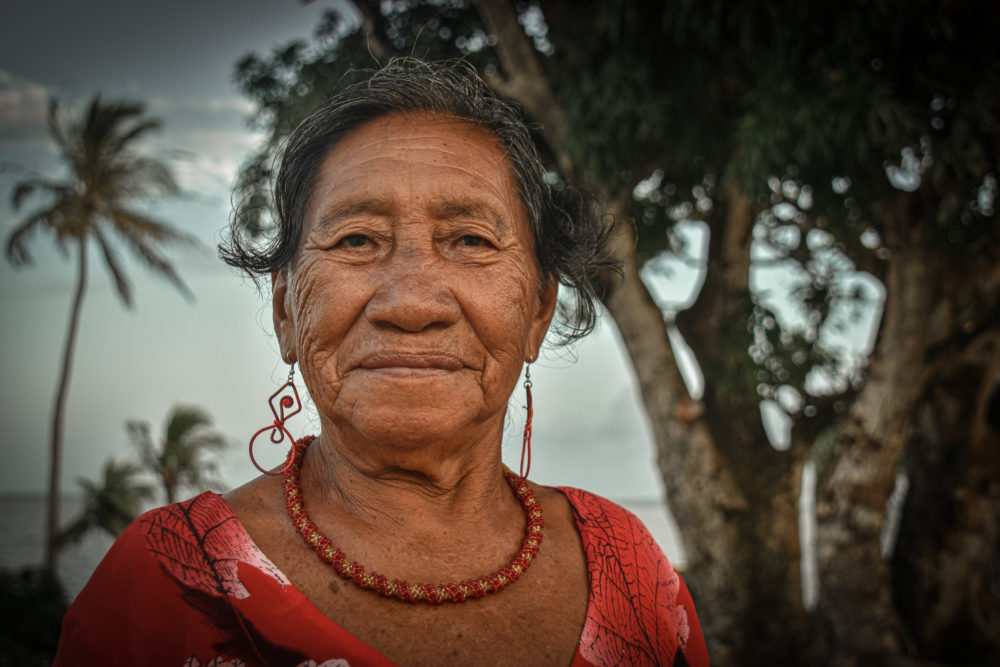
A village elder with a kind face
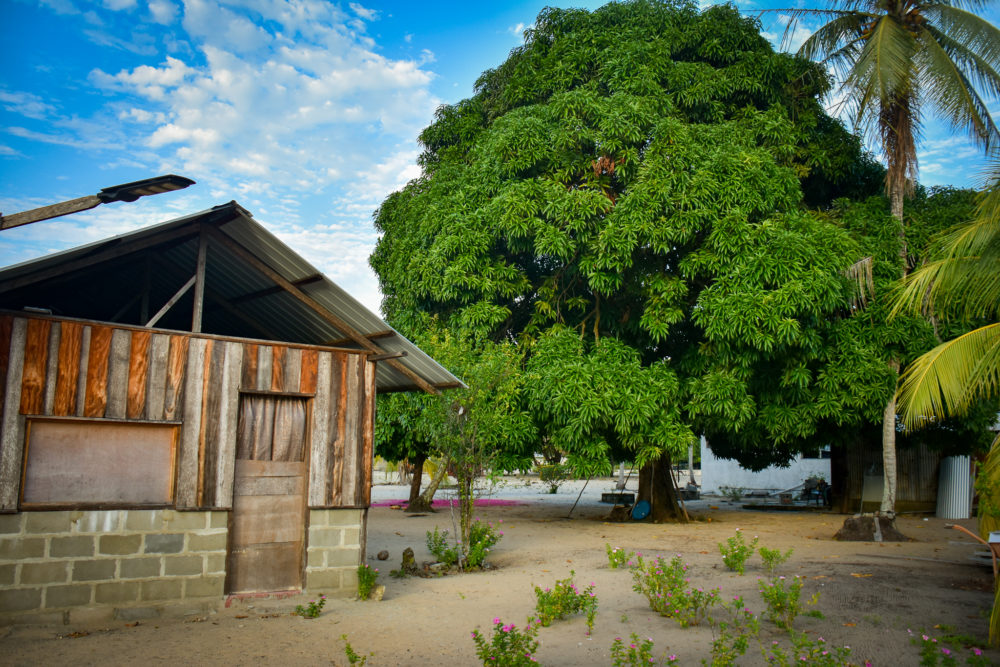
Village Houses
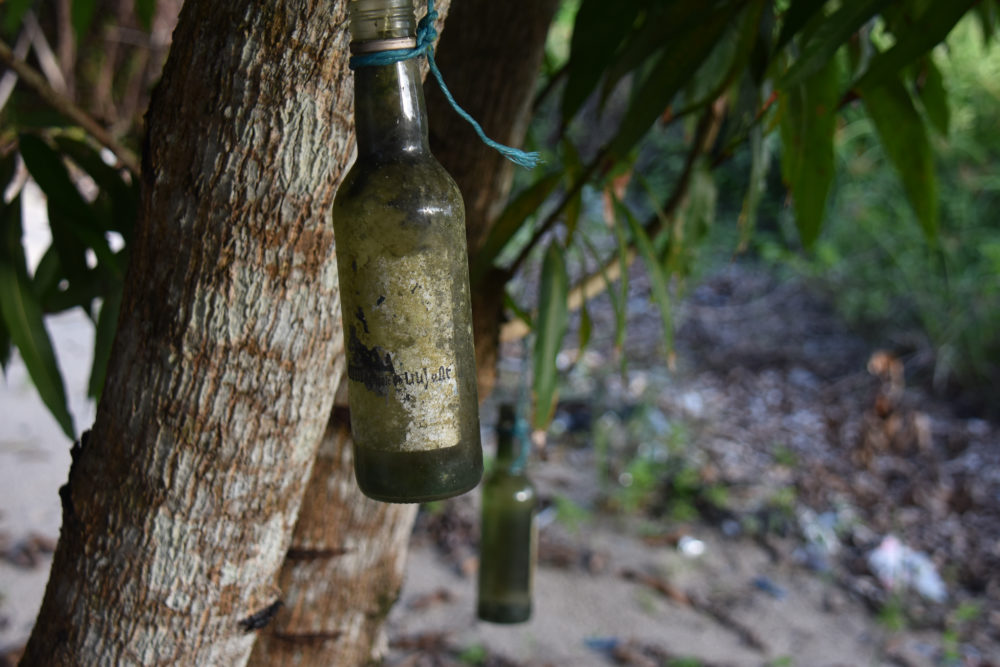
Bottles with water are placed on the tree has a traditional offering to the tree to help it grow. This is a common sight in the village
As I mentioned, it’s good to explore a village with someone local. This first came in handy when an intoxicated boy drinking with his family saw us approaching. He became enraged and approached us, yelling in the Carib Indian language. Our guide calmed him down and escorted him away from us. Then again, later, we heard some traditional music, which our guide said was a shaman performing a ritual. When we approached the shaman to see more, another irate and intoxicated youth began to yell at us, and we backed off. We didn’t want to lose out on the opportunity to meet the shaman, so we devised a plan to buy some beers at the village store and present them as a peace offering. The idea worked like a charm, and everyone, including the shaman, was pleased to invite us into their circle.
The shaman performing his ritual song
The shaman sat among a group of men smoking a local plant that may have had some hallucinogenic properties while performing two songs for us. The first one was about the eagle and the second the jaguar. Both are sacred animals to the Carib and are considered spiritual guardians. He explained that his song and maraca-like instrument in his hand are spiritual weapons. He explained they may not look like much, but they are lethal to the enemy when he is in his spiritual trance. A local woman practiced her traditional dancing off to the side in a traditional handmade skirt.
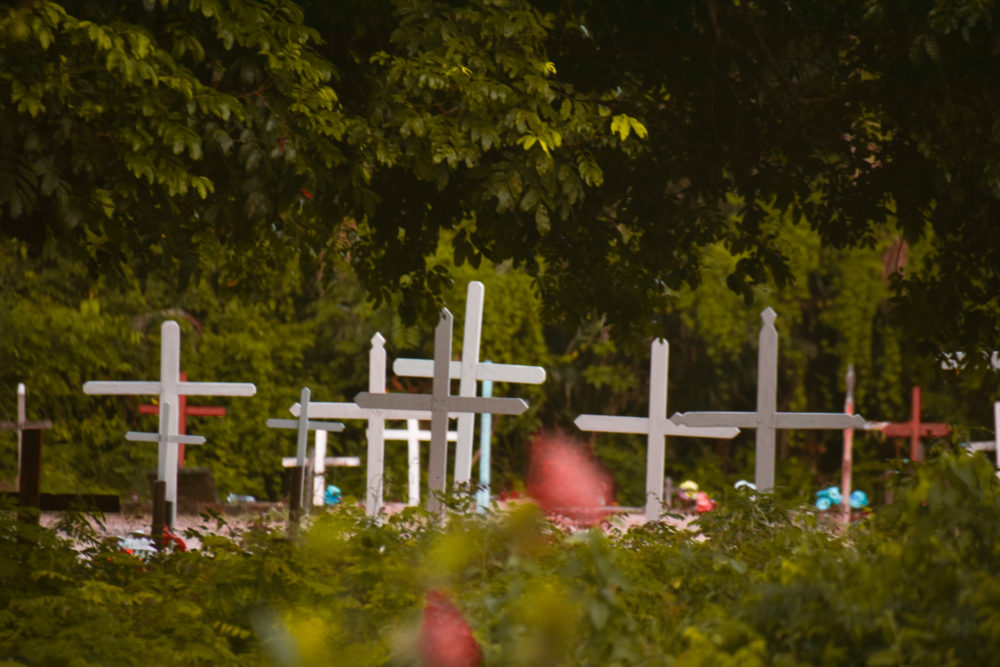
Village graveyard
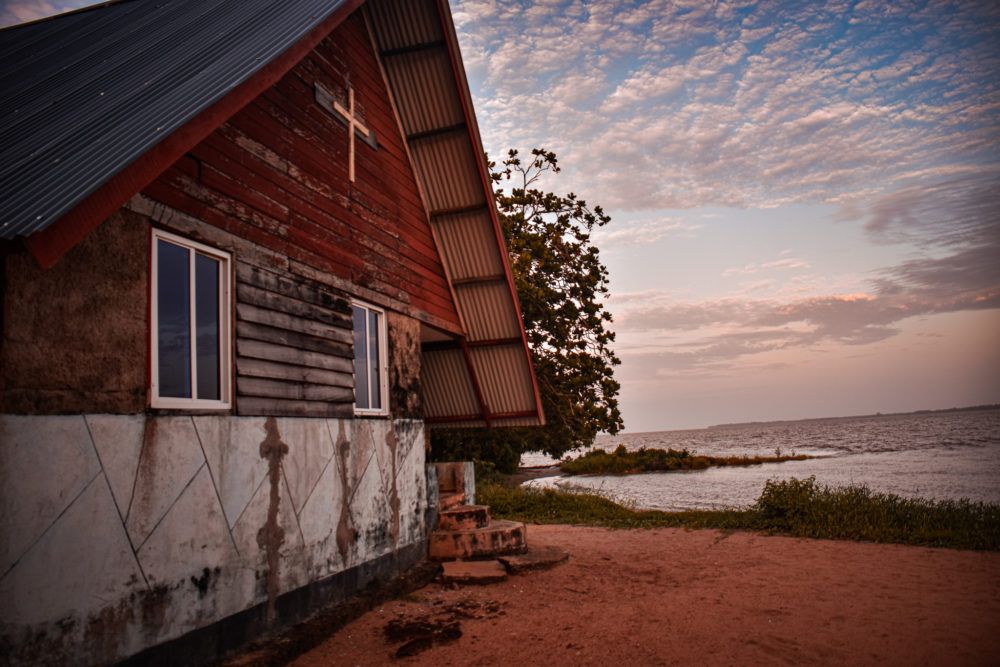
Church
Attemp at Watching Sea Turtles Nesting at Night
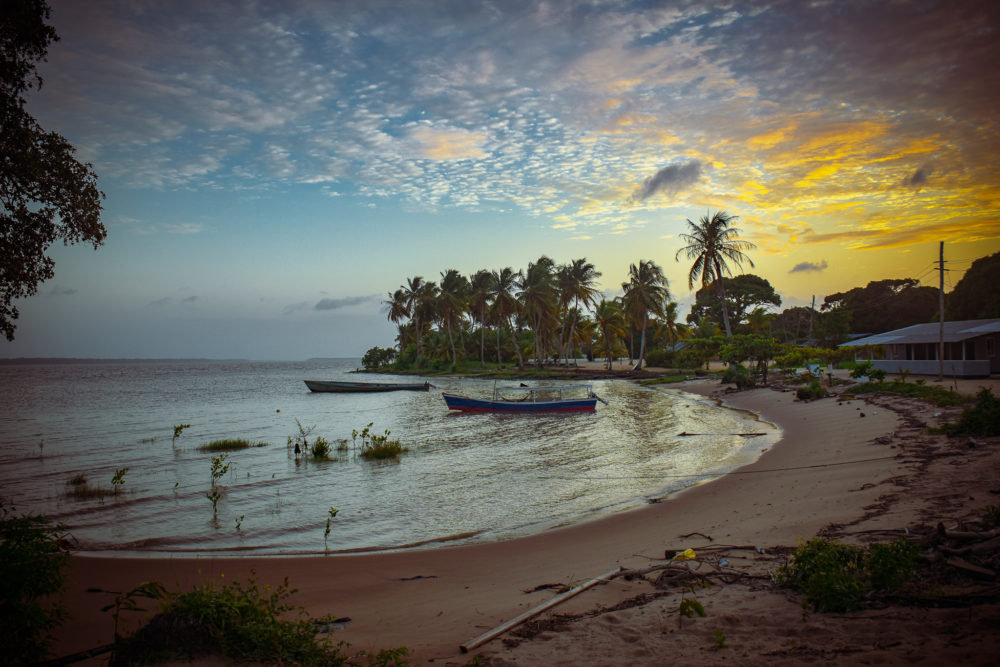
River Cove in Village
The sea turtle nesting season for Leatherback and Green turtles starts in February, but given that turtles don’t stick to schedules, there was still a good chance of seeing some early arrivals. I had seen leatherback and green turtles laying eggs before in Bioko Island, Equatorial Guinea, and I absolutely loved it. So, I was excited to possibly see some more of them in Suriname. As is so often the case in my travels during Covid, we are always the only tourists in most places we go, and we would have the entire turtle beach to ourselves. Since the tide had retreated, leaving our boat stranded on dry land now, we had to wait for it to return late at night. The night is also the best time to see turtles laying their eggs.
Only one local fisherman in town was willing to take us to the turtle beach, which was a good 30-minute boat ride away in choppy dark river and ocean waters. According to the fisherman, the tide would be right at 10 pm. So, we slept a few hours and woke up and set off across the village to meet our boat and see some turtles. When we arrived at the boat, it was still sitting on dry land, hundreds of feet of dry land, and the fisherman, who was very enthusiastic, was neck-deep in beer bottles and seemingly intoxicated. He insisted the tide was coming and everything was fine. As we sat staring at the water, it felt like we were watching paint dry. Minutes turned into hours, and hours turned into well more hours. Still the fisherman kept saying, I live here and am fisherman; it is coming. Around 2 am, the tide finally came rushing in as fast as the fisherman said it would but only much later than he said it would.
We anxiously set foot into the boat, ready to finally motor off. The boat had about 1-2 feet of water inside of it. The fisherman laughed it off by saying it is a wooden boat; water always leaks. We pushed off into deeper waters, and the fisherman cranked the motor’s chord, but the engine did not catch. It puttered for a few seconds and nothing. As we floated around in circles for the next 30 minutes, the fisherman kept repeating his efforts to start the motor, but it was clear that he had flooded it and the engine would need to be disassembled in the morning, and our little turtle watching trip was doomed. Feeling defeated, we went off to bed and sadly never made it to the turtle nesting beach.
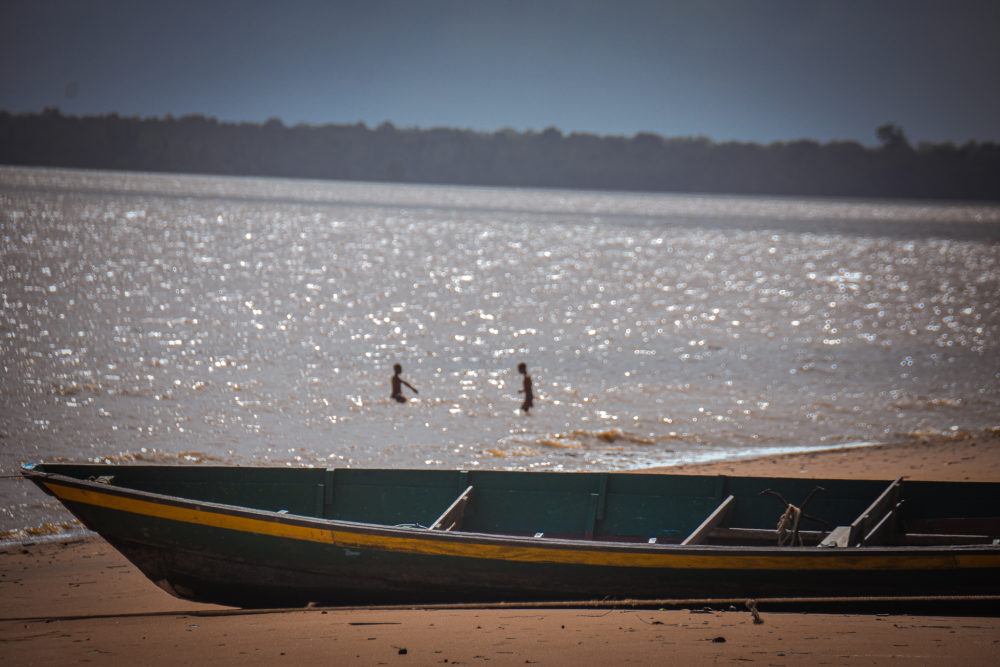
Kids playing in the river near the village
Day 2: Given that we hadn’t really slept for the last two nights, we slept until 10am in the morning. When we woke up, the tide had provided us a short window of opportunity to leave the village and hurry down the river to Albina, so we set off.
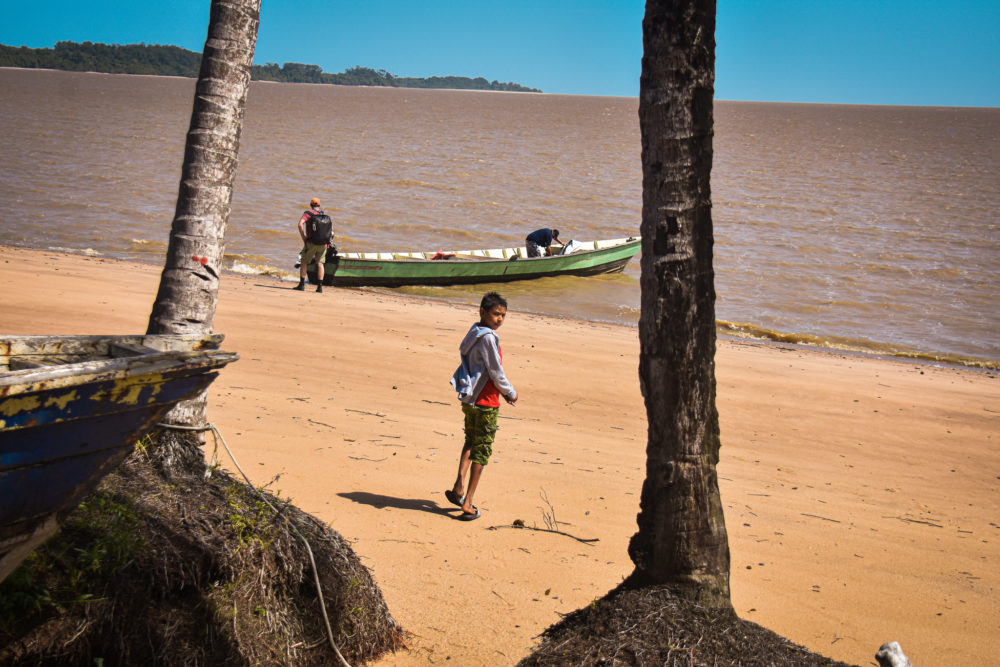
Our boat, Jimmie and the boat man’s son as we departed the village
Along the way to Albina, we stopped at Saint Laurent, French Guiana to visit the old French colonial era prison.
After visiting Saint Laurent and unsuccessfully breaking into the old French prison, we returned to Suriname on a quick boat trip. We had a few more celebratory beers with our driver and the boat crew before we set off for the 2-hour drive to Paramaribo. Jimmy and I decided to pick a central hotel, so we chose the Royal Torarica Hotel, which turned out to be a lot nicer and swankier than expected with an MTV-like pool party and DJ blasting rave music. But it was conveniently located within walking distance of restaurants, the old town, and near our Covid testing center, where we needed to be early in the morning for our rapid test.
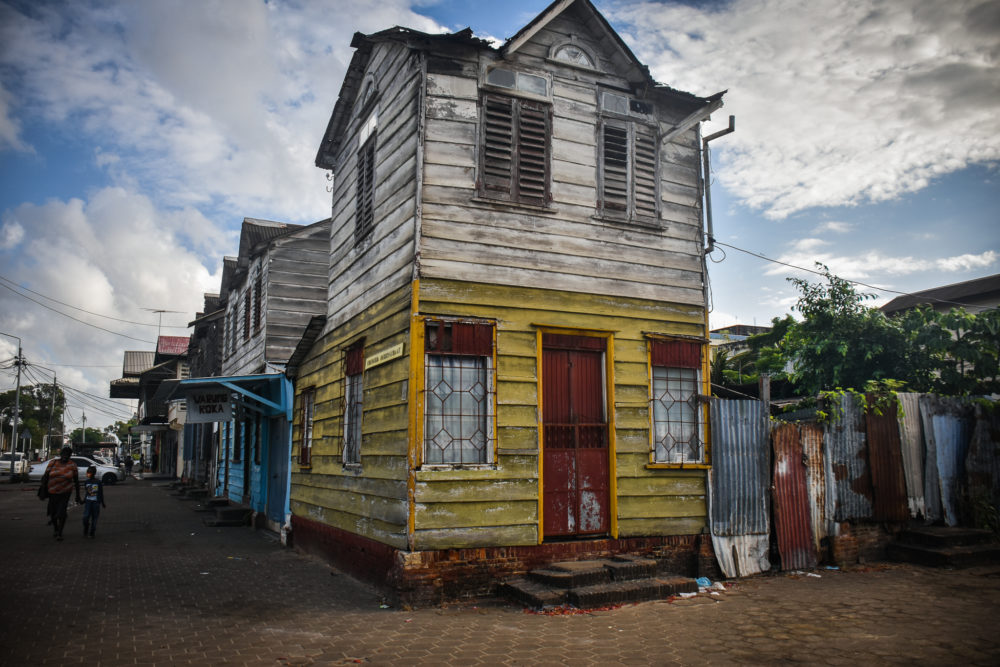
Old wooden houses in Paramaribo that are a patchwork of interesting colors and different types of wood
Day 3: I arranged a trip for us to the Brownsberg Amazon rainforest reserve, which would require a 4wd vehicle to reach. Our driver picked us up in the morning, and on the way, we stopped to get our mandatory covid test, which we needed to return to the USA later in the evening. The good thing about the covid test was that the test center was in a residential neighborhood with lots of beautiful tiny wooden houses that I really loved.
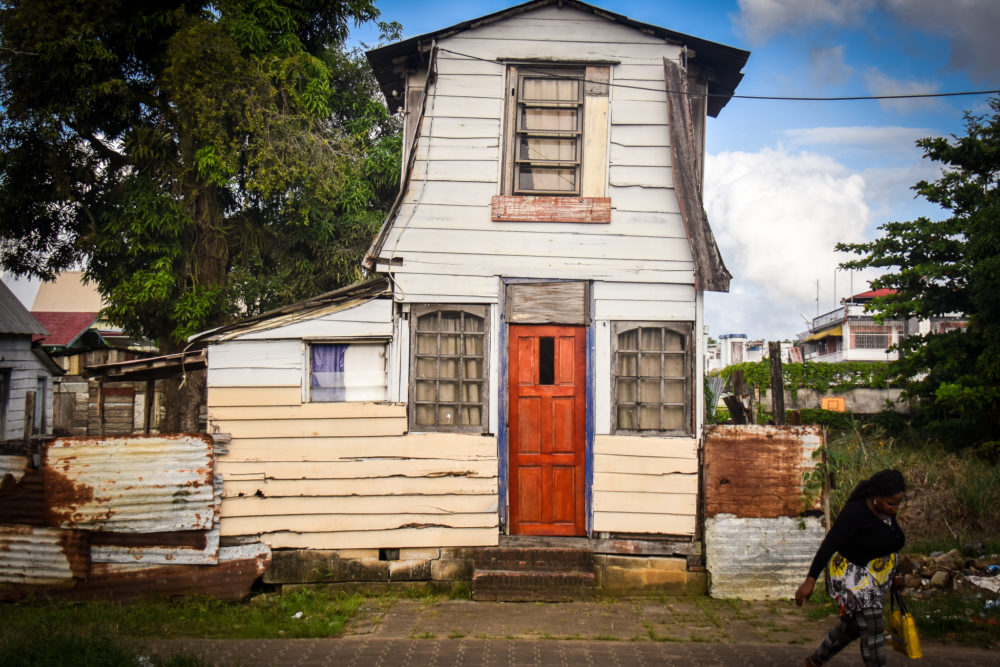
Paramaribo Houses
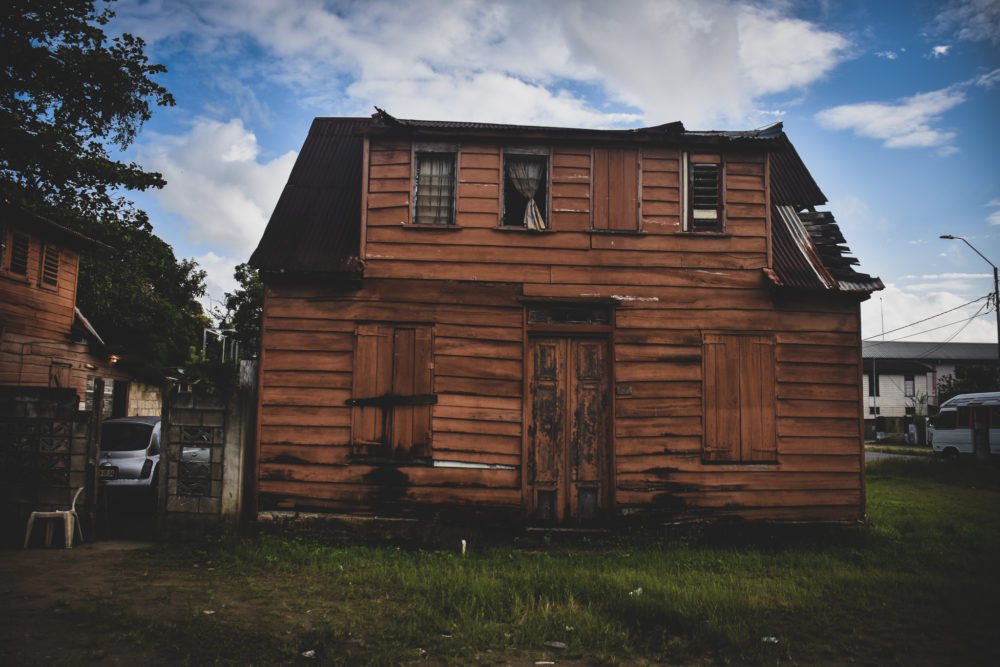
More old houses
Amazon Rainforest-Brownsberg Reserve
From Paramaribo, we set off to Brownsberg reserve, a few hours’ drive to the interior. The reserve consists of rainforest surrounding the mountains around a flooded stretch of the Suriname River caused by the river’s hydroelectric dam construction. The rainforests are known for their high concentrations of wildlife, jaguar, monkeys, etc. One theory for this is that the flooding from the dam displaced all of the wildlife from the flooded forests to where the reserve is now.
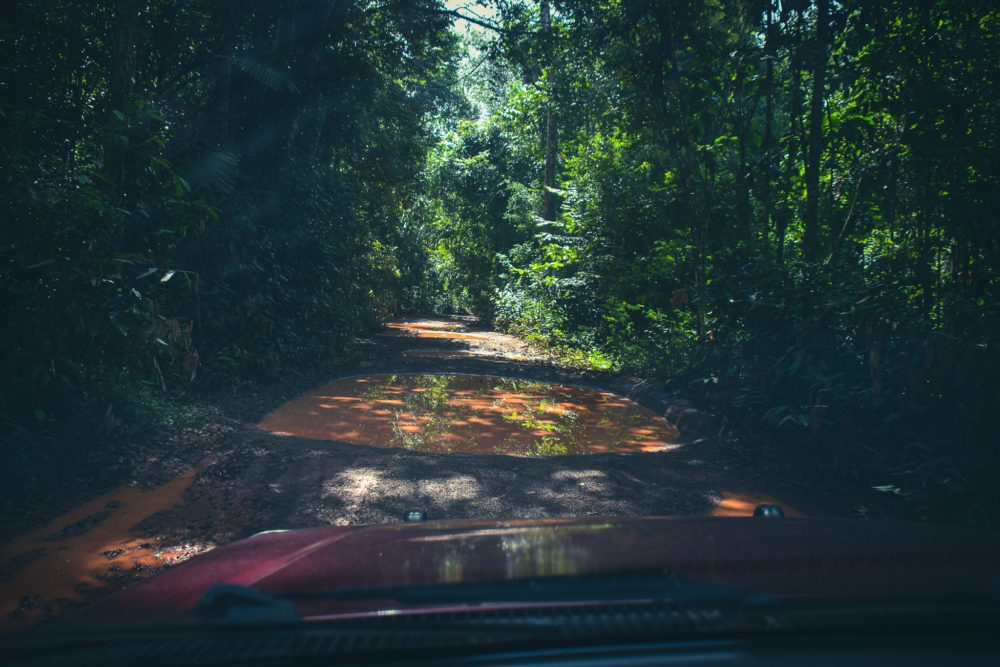
Rough 4wd roads into the reserve
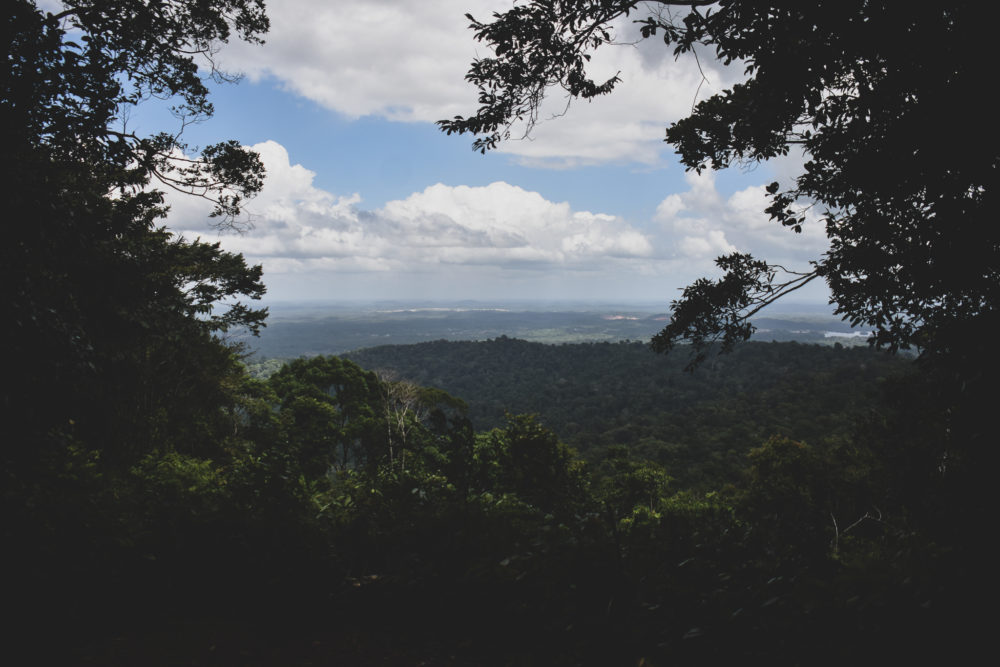
View from a mountain top
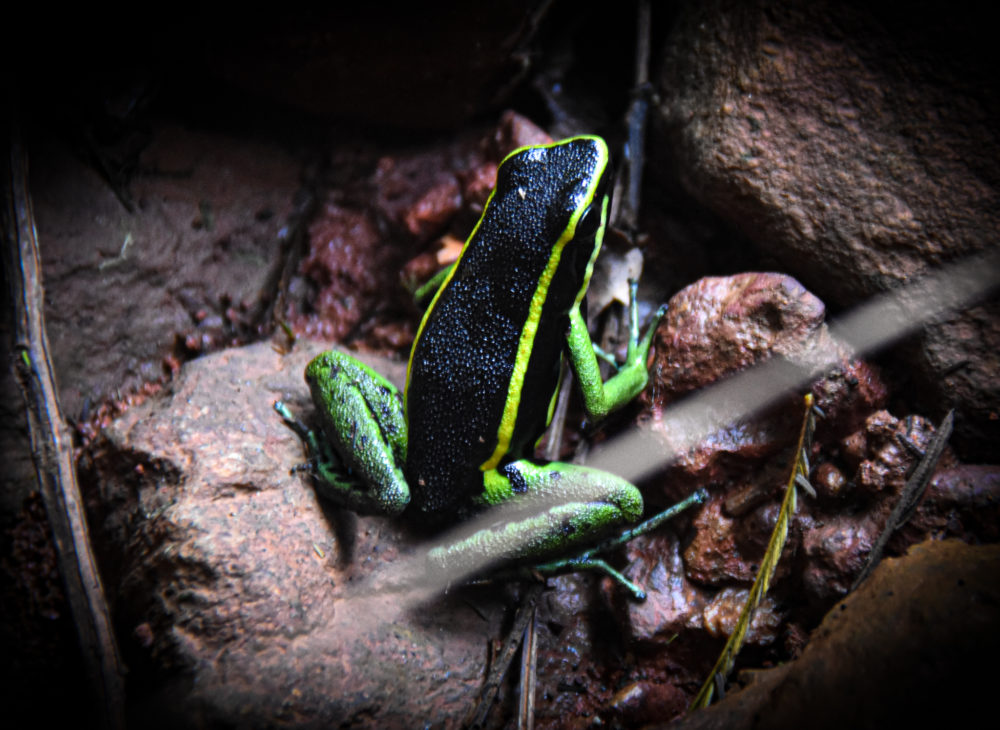
Poison dart frog
The road into the reserve was definitely rough, and there were a few stretches where we thought we might get stuck in the mud. The rainforest began to envelop us the moment we entered the reserve. Giant trees towered over us, and on occasion, we would see howler and spider monkeys soaring through the canopies well above us. We checked in with the ranger and set off on a 3-hour hike to waterfalls to see as much wildlife as possible.
On occasion, we saw evidence of huge gold mining caves bore into the ground and abandoned for bats and snakes to colonize. Gold mining has been a plague to the reserve. Mercury released, and deforestation from the mining process can be found throughout the Amazon and encroach illegally into the reserve.
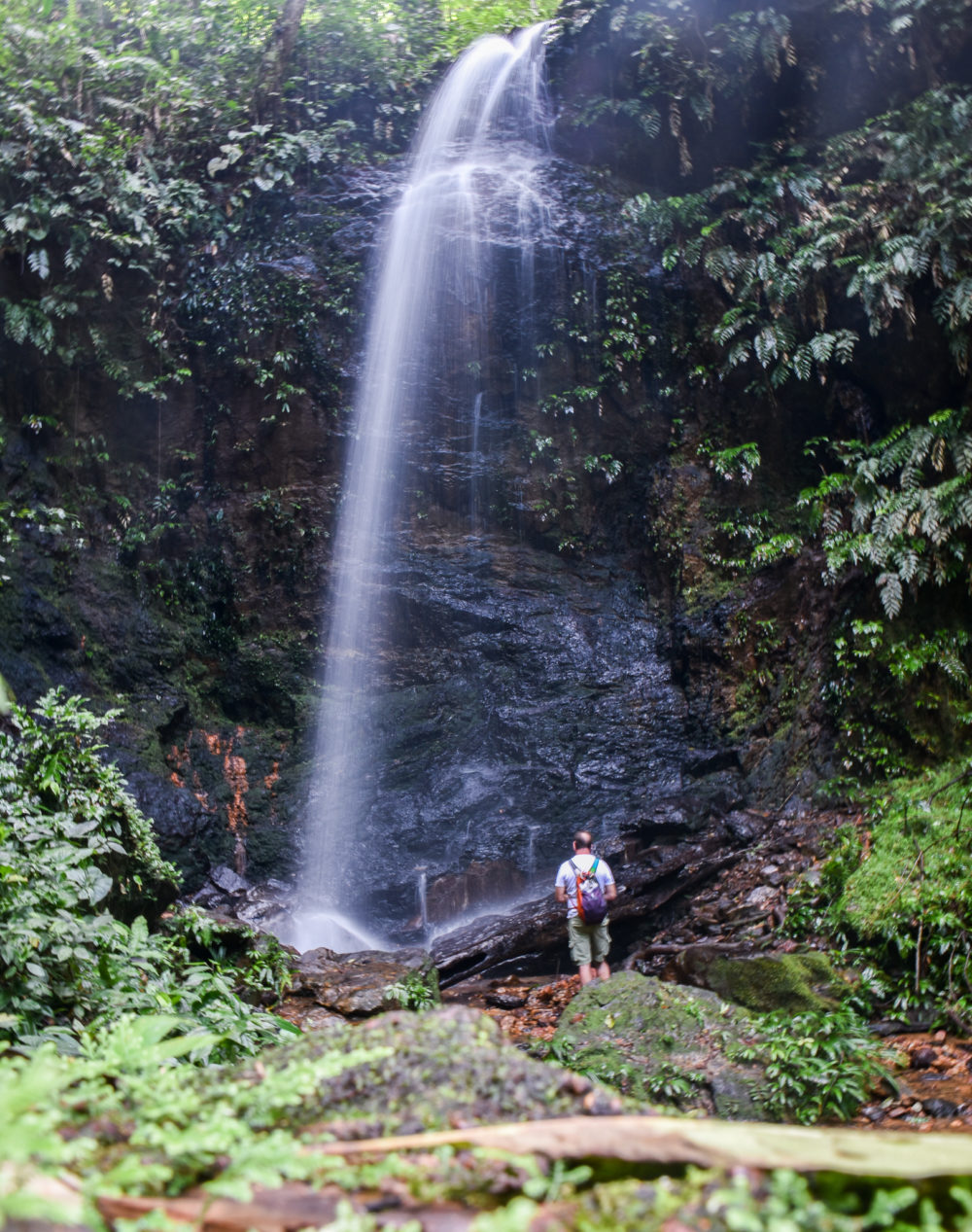
Jimmie at Leaova Falls
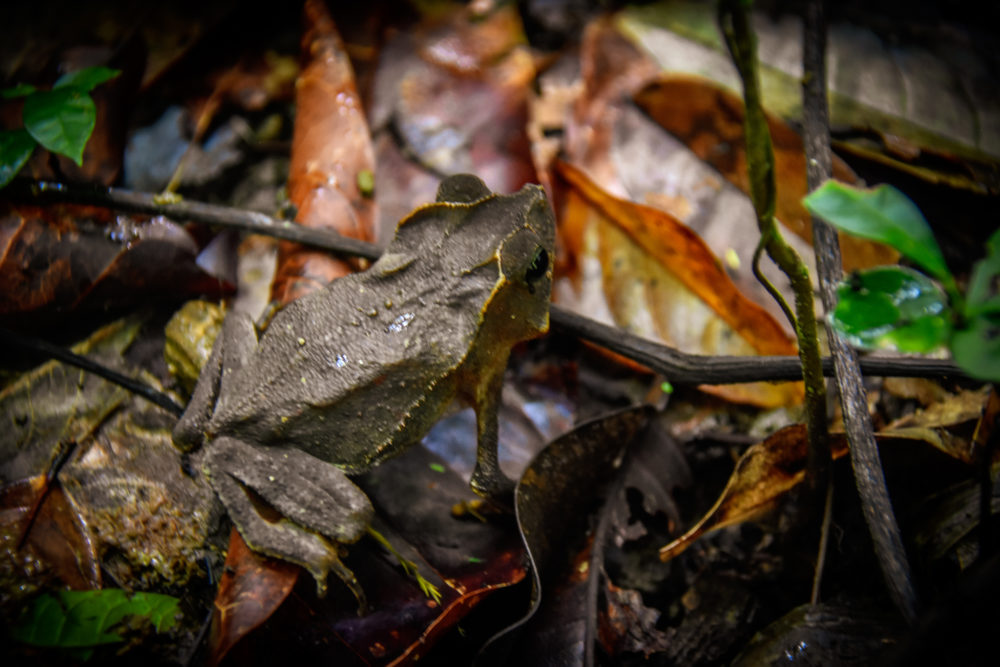
A leaf frog barely visible hidden in the leaf litter
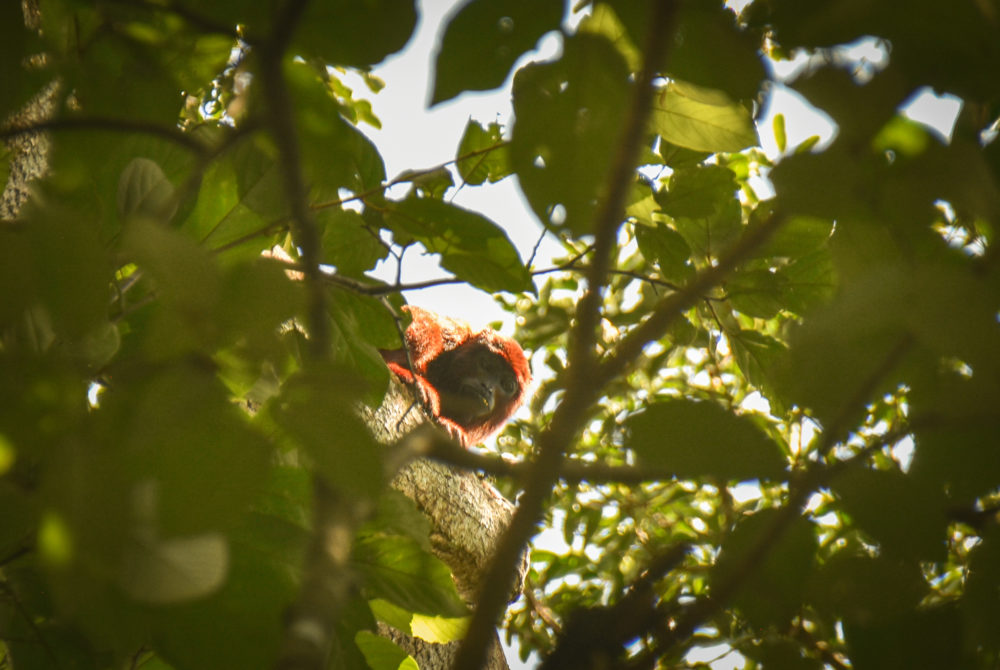
Howler monkey throwing sticks at us
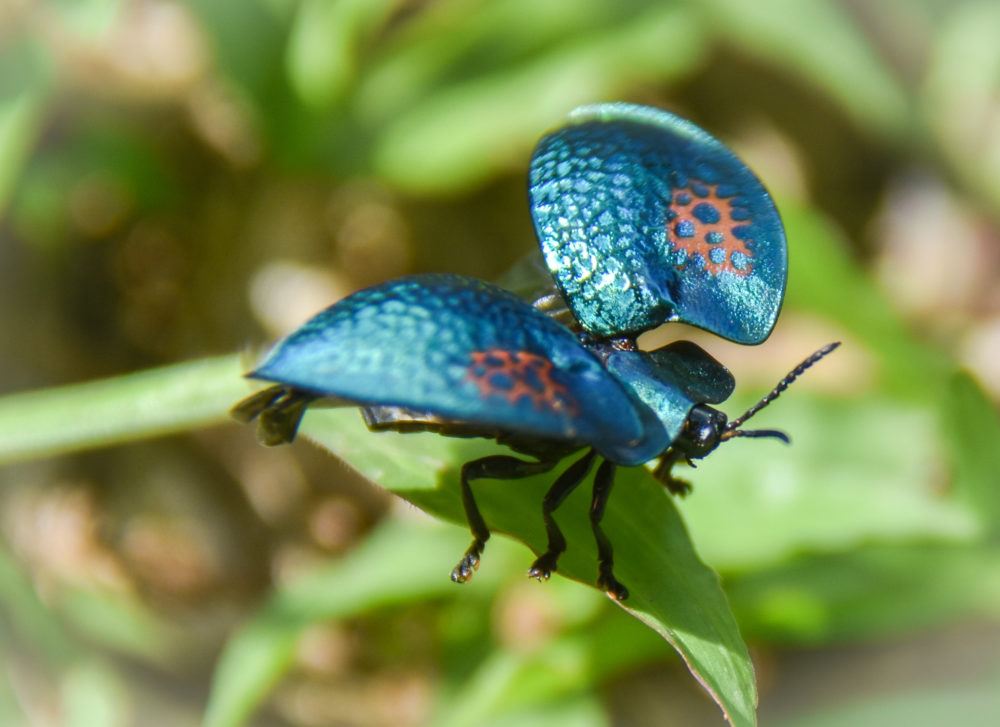
Beautiful insect
We had a close call with some angry spider monkeys that dive-bombed us at the waterfalls, making me think that part tree was crashing down upon us. Jimmie tried to venture into a gold mine but quickly high-tailed it out when he started some bats. Brownsberg Reserve was a great day trip, and we saw a lot of wildlife and enjoyed our time there. After having a late lunch, our driver dropped us off at the Overbridge Resort next to the airport, where we spent the next 6 hours relaxing before our late-night departure at 2 am to Miami.
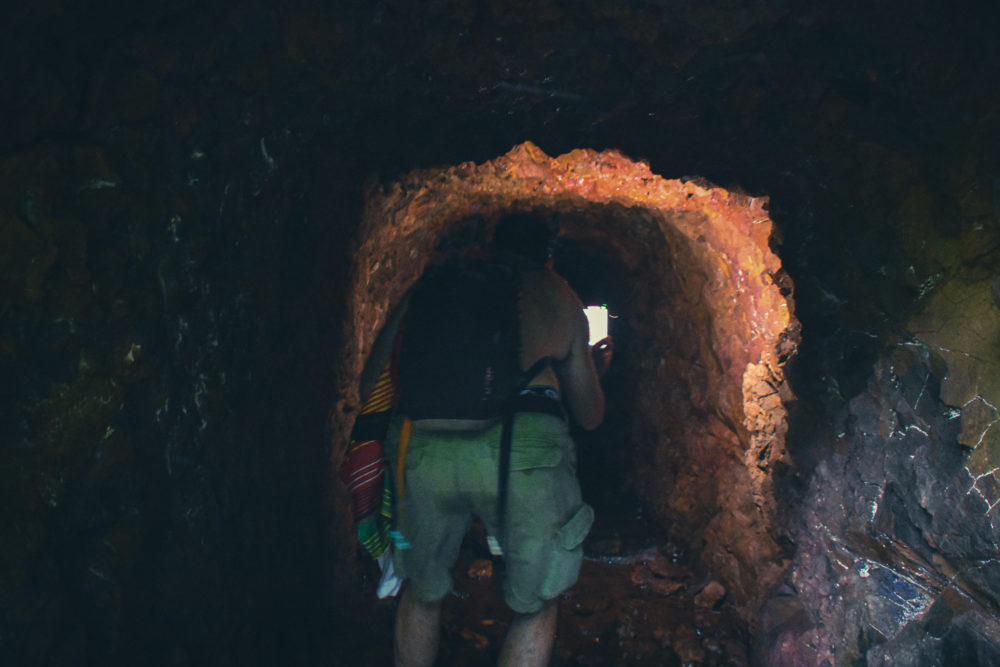
Jimmie trying to explore a Gold mine before being attacked by bats
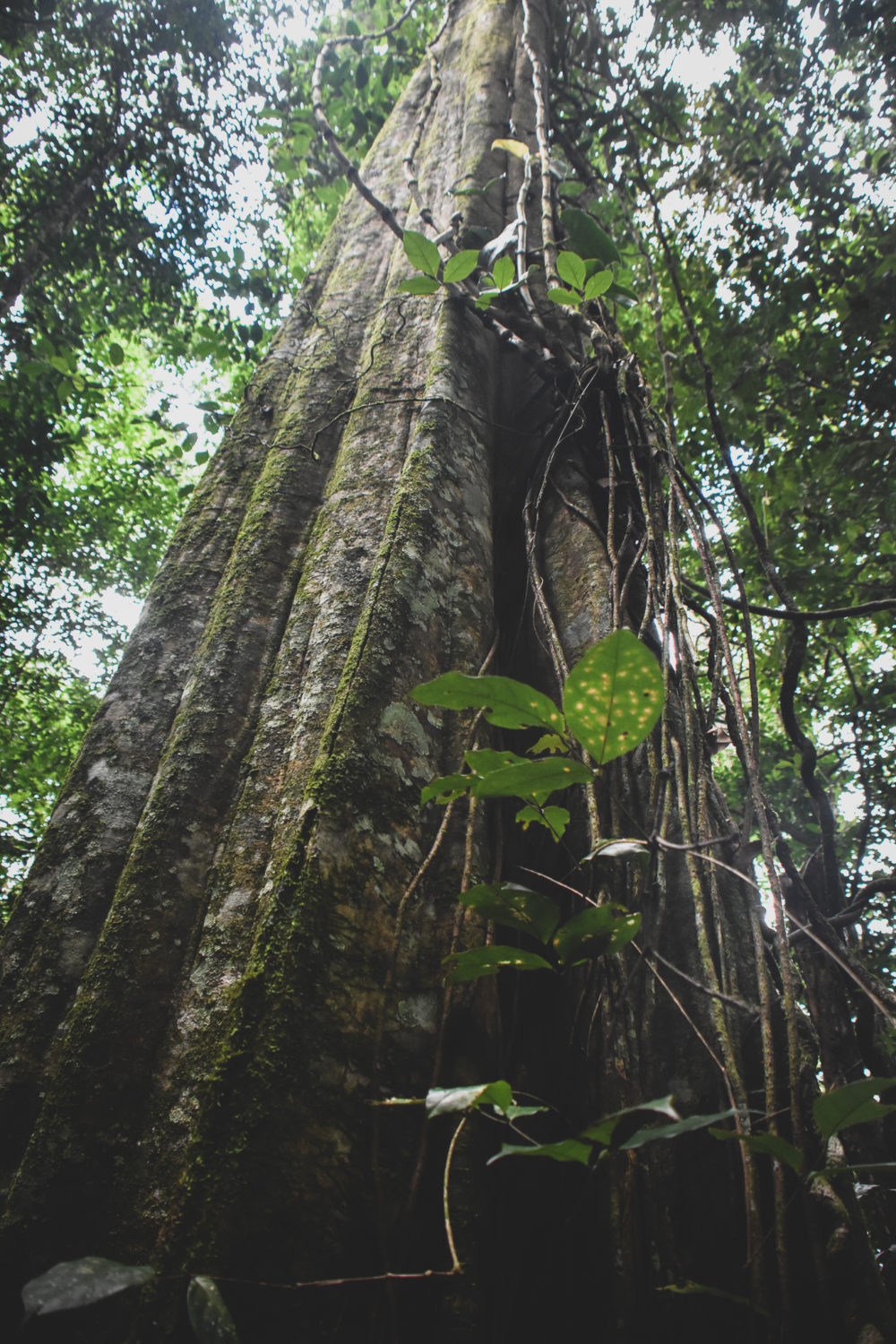
Huge rainforest tree

